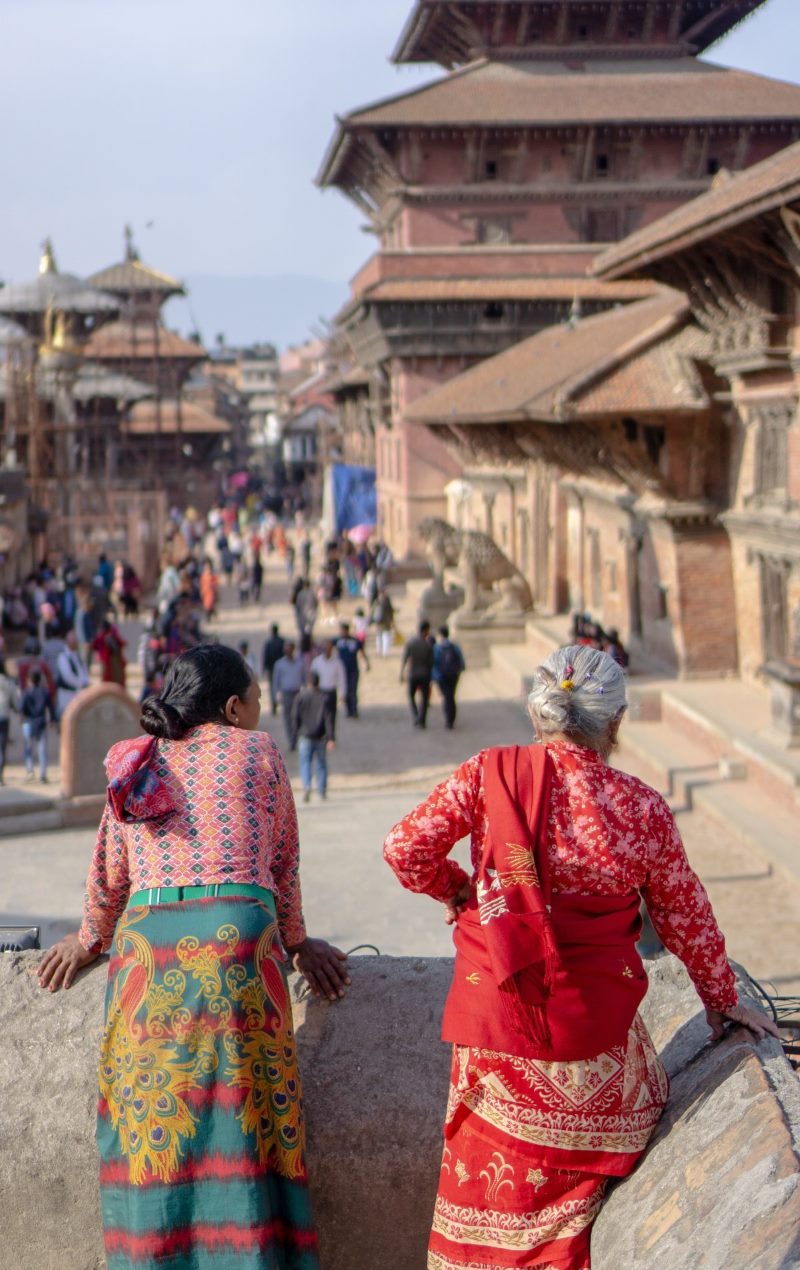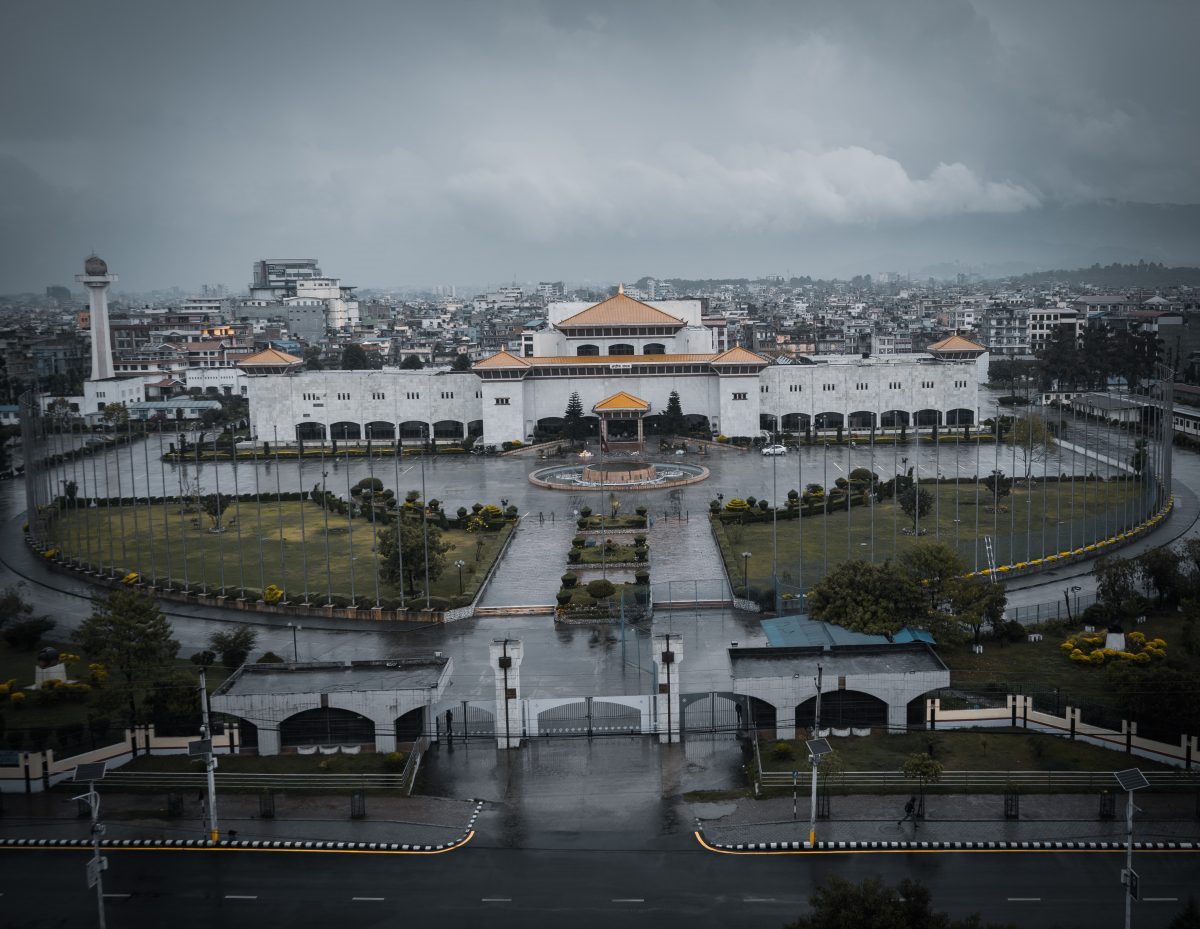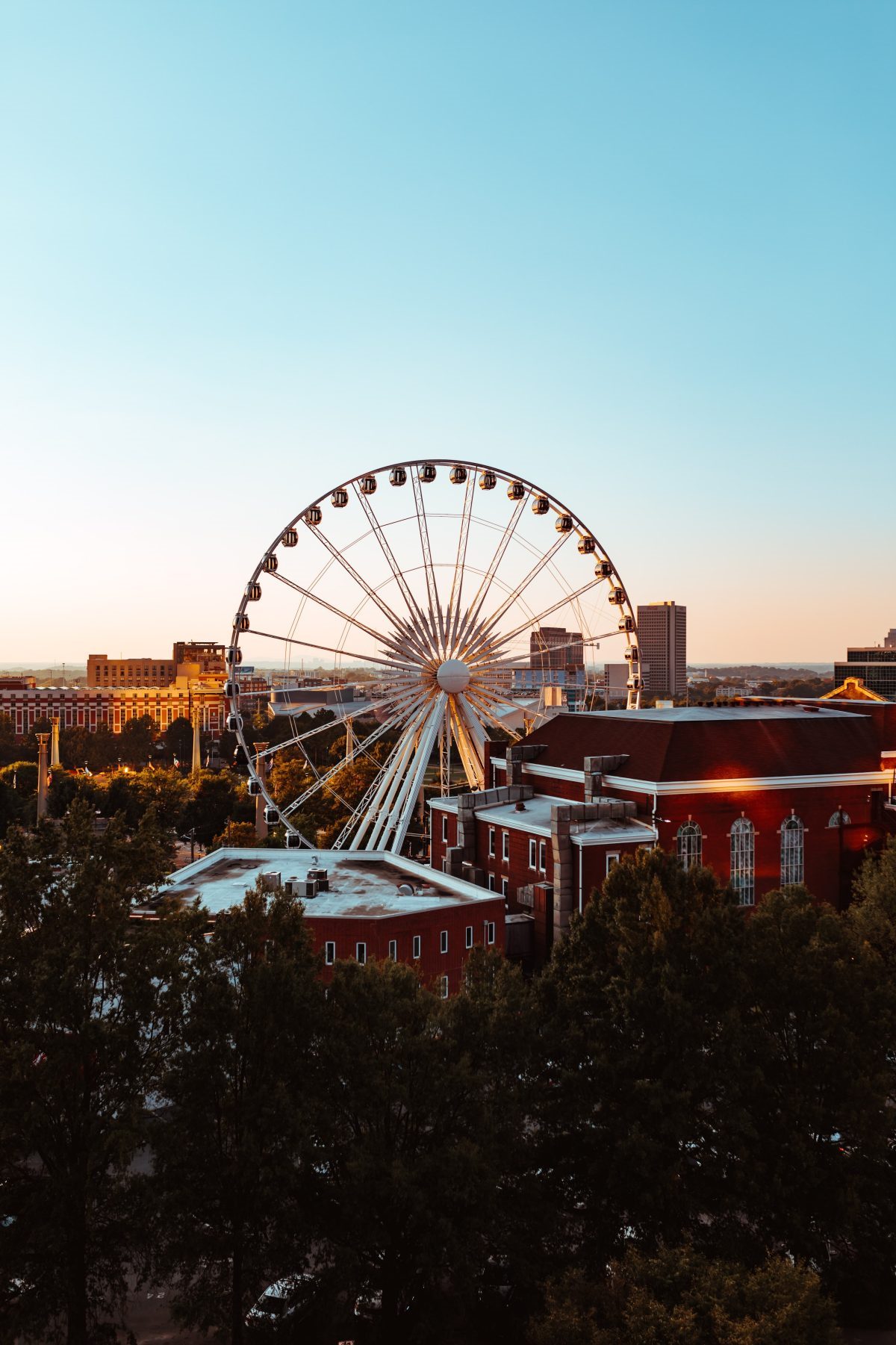How to Plan Your One-hour Panoramic Everest Flight in Kathmandu
If you’re planning a trip to Kathmandu or if you’re already there, make sure to include one of the most spectacular and breathtaking experiences on your list – a one-hour panoramic flight over the Himalayas. From the guaranteed window seat of the aircraft, you’ll get to marvel at 20 of the world’s highest peaks including the majestic Mount Everest, the highest mountain in the world. In this blog post, we’ll guide you step-by-step on how to plan your panoramic Everest flight from Kathmandu.
Experience
This experience takes you on an epic adventure over the Himalayas allowing you to experience panoramic views of some of the highest peaks in the world. You’ll get to see towering mountain ranges, snow-covered peaks, and remote landscapes from the comfort of your seat. The one-hour scenic flight is a perfect choice for those who want to see the beauty of the Himalayas but don’t have enough time to trek through the mountains.
Highlights
- One-hour panoramic flight over the Himalayas
- Spectacular views of 20 of the world’s highest peaks
- Guaranteed window seat
- Admire majestic and awe-inspiring Mount Everest
How to Book Your One-hour Panoramic Everest Flight?
The first step of planning your Everest flight is to book your tour. Head to this link to book your tour. You’ll be redirected to the official page of Get Your Guide where you can complete your booking process. Make sure you choose a date and time that suits your schedule. It’s essential to book your flight ahead of time because seats usually sell out quickly, especially during peak season.
How to Get to Kathmandu Domestic Airport?
The one-hour panoramic flight departs from Kathmandu domestic airport located in Sinamangal. You can easily reach the airport by taxi, which will cost you around 400-500 Nepali rupees if you’re staying in Thamel, the tourist hub of Kathmandu. You can also take a public bus or hire a private car to get there.
What to Expect During the One-hour Panoramic Everest Flight?
Your one-hour panoramic Everest flight will take off from the domestic airport in Kathmandu in the early morning, usually around 6:00 AM. The best time to visit Nepal for a scenic flight is October through to May.
As soon as the aircraft takes off and heads towards the east, you’ll get to witness the breathtaking views. You’ll get a 180-degree view of the Himalayas, and almost immediately, you’ll be greeted by Gosaithan, also known as Shisha Pangma, standing tall at an awe-inspiring height of 26290 feet (8013 meters). Dorje Lhakpa will appear next, located to the right of Gosaithan, an incredible mountain with an almost figure 8-like shape, which stands at a height of 22000 feet (7000 meters).
After witnessing the beauty of Dorje Lhakpa, you’ll see Phurbi Ghyachu, which looks like a massive tooth protruding from the mountains. You’ll also see beautiful landscapes and forests on your way to Mount Everest. The highlight of the flight is undoubtedly when the plane flies close to Mount Everest, which provides you with an incredible view of the highest mountain in the world.
Throughout the flight, the pilot will provide informative commentary about the beautiful landmarks you see through your window.
Tips for Your One-hour Panoramic Everest Flight
- Don’t forget to carry your camera, extra batteries, and memory cards to capture this incredible experience.
- Make sure you book your flight ahead of time.
- Arrive at the domestic airport at least 30 minutes before your scheduled departure time.
- Wear comfortable clothing, as the temperature on the flight can be quite different from the weather outside.
- For those who suffer from severe altitude sickness, it’s better to avoid this scenic flight.
- Try to get a seat on the left side of the plane for the best views of the mountains.
The Bottom Line
Now that you’ve got a clear idea of how to plan your one-hour panoramic Everest flight in Kathmandu, it’s time to book your tour and witness the incredible beauty of the Himalayas. With our detailed guide, you can be assured of a hassle-free and amazing experience on your visit to Nepal.

Frequently Asked Questions About Kathmandu
Kathmandu is the capital city of Nepal and is renowned for its rich culture, spirituality, and stunning landscapes. If you’re planning a trip to Kathmandu, here are some frequently asked questions that will help you get a better understanding of the city:1. What is the best time to visit Kathmandu?
The best time to visit Kathmandu is during the months of September to November when the weather is sunny and clear. The spring months, from March to May, are also a good time to visit as the weather is mild, and the flowers are in bloom. However, if you’re looking for a budget-friendly trip, plan your visit for the monsoon season, from June to August, when the prices are lower, and the crowds are thinner.2. What is the currency used in Kathmandu?
The currency used in Kathmandu is the Nepalese Rupee (NPR). The denominations of the Nepalese Rupee come in notes and coins, with the notes being of values NPR 5, 10, 20, 50, 100, 500, and 1000. Coins, on the other hand, come in 1 Rupee, 2 Rupees, and 5 Rupees.3. What are the must-visit places in Kathmandu?
There are numerous places to visit in Kathmandu, but some of the top attractions include:- Swayambhunath Stupa, also known as the Monkey Temple
- Pashupatinath Temple, the most important Hindu Temple in Nepal
- Boudhanath Stupa, the largest Buddhist stupa in Nepal
- Kathmandu Durbar Square, a UNESCO World Heritage Site
- Garden of Dreams, a beautiful neo-classical garden in the heart of Kathmandu
4. What are the best dishes to try in Kathmandu?
Kathmandu is a foodie’s paradise that offers a range of delicious dishes that suit everyone’s taste buds. Some of the best dishes to try in Kathmandu include:- Momo, steamed or fried dumplings filled with meat or vegetables
- Thukpa, hearty noodle soup with vegetables or meat
- Dal Bhat, a traditional Nepali meal that consists of lentil soup, rice, and vegetables
- Chow Mein, stir-fried noodles with vegetables, meat, or eggs
- Yomari, a sweet dumpling made of rice flour and filled with a mixture of coconut and molasses
5. What is the transportation system like in Kathmandu?
Kathmandu has a well-connected transportation system that includes buses, taxis, and rickshaws. The most common mode of public transportation is the bus, which connects all the major parts of the city. If you’re looking for a more comfortable and convenient mode of transportation, you can hire a taxi or a private car. Rickshaws are also a popular form of transportation for shorter distances.6. What are some safety tips to keep in mind while visiting Kathmandu?
Kathmandu is a relatively safe city, but it’s always advisable to take some precautions to ensure your safety. Some safety tips to keep in mind while visiting Kathmandu include:- Avoid carrying large sums of cash
- Keep your valuables safe and secure
- Dress modestly and appropriately, especially in religious places
- Be cautious of your surroundings and avoid walking alone in isolated areas
- Take extra care when crossing the streets as the traffic can be chaotic
7. How can I get a visa for Nepal?
Foreign nationals require a visa to enter Nepal. The visa can be obtained from the Nepalese Embassy or Consulate in your country or on arrival at the Tribhuvan International Airport in Kathmandu. The Visa on Arrival costs $25 for 15 days, $40 for 30 days, and $100 for 90 days. You will need a passport with a validity of at least six months and two passport-sized photographs. It is also recommended to carry the exact amount in cash.8. What are some cultural norms to keep in mind while visiting Kathmandu?
Nepal has a rich culture and tradition, and it’s essential to respect and follow the cultural norms of the country when visiting. Some cultural norms to keep in mind while visiting Kathmandu include:- Dress conservatively and appropriately, especially in religious places
- Remove your shoes before entering religious places and private homes
- Use your right hand to eat, shake hands, or pass an object
- Avoid public displays of affection
- Refrain from smoking or consuming alcohol in public places
9. Can I use my credit/debit card in Kathmandu?
Credit and debit cards are widely accepted in Kathmandu, especially in the tourist areas. However, it’s always advisable to carry some cash with you as some smaller establishments and local markets may not accept cards. You can also withdraw cash from ATMs, which are readily available in the city.10. What are some useful phrases in Nepali?
Learning a few basic phrases in Nepali can go a long way in helping you communicate with locals and make your trip more enjoyable. Here are some useful phrases in Nepali:- Namaste – Hello
- Dhanyabad – Thank you
- Maaf garnuhos – Excuse me
- Malai samjhanu bhayo – I don’t understand
- Tapasle Angrezi bolna saknuhunchha? – Can you speak English?
Book Your Tour Now
Kathmandu is a captivating city that offers a blend of culture, history, and stunning scenery. By keeping these frequently asked questions in mind, you will be able to plan your trip to Kathmandu with ease, stay safe, and make the most of your time in the city. Remember to be respectful of the cultural norms and enjoy your trip to this beautiful city!
How to Spend Your Time as a Tourist in Kathmandu
Kathmandu, the capital city of Nepal, is a popular destination for tourists from all over the world. The city is known for its stunning architecture, vibrant culture, and rich history. There are so many things to do and see in Kathmandu that it can be overwhelming, especially if you’re traveling there for the first time. This guide will help you make the most of your time as a tourist in Kathmandu by providing you with a detailed itinerary of the city’s must-visit attractions and activities.Day 1: Explore the Historic Durbar Square
Durbar Square is a UNESCO World Heritage Site located in the heart of Kathmandu. The square is surrounded by temples, palaces, and bustling markets, and it’s a great place to immerse yourself in the city’s rich history and culture. Here’s what you can expect to see and do during your visit:1. Visit the Hanuman Dhoka Palace
The Hanuman Dhoka Palace is one of the most iconic structures in Durbar Square. Built in the 17th century, the palace served as the residence of the Malla kings and later the Shah dynasty. Today, it is a museum that houses a collection of historical artifacts and artwork.2. Admire the Intricate Details of the Kumari Bahal
The Kumari Bahal is a three-story temple that houses the Kumari, a young girl who is believed to be the living embodiment of the Hindu goddess Taleju. The Kumari is chosen after a rigorous selection process and is considered as a protector of the city. As you admire the intricate details of the temple, keep an eye out for the Kumari, who occasionally appears in a window to bless her followers.3. Take in the Views from the Changu Narayan Temple
Located on a hilltop overlooking the Kathmandu Valley, the Changu Narayan Temple is one of the oldest temples in Nepal, dating back to the 4th century. The temple’s architecture combines Nepali and Indian styles, making it a great place to appreciate traditional craftsmanship.Day 2: Trek to the Top of Swayambhunath Stupa
Swayambhunath Stupa, also known as the Monkey Temple, is a Buddhist temple located on top of a hill. The temple’s iconic white dome and spire can be seen from miles away, and the temple itself is surrounded by monkeys that are considered sacred by the locals. Here’s what you can expect during your visit:1. Climb the Stairs to the Top of the Stupa
The journey to the top of the stupa involves climbing a series of steep stairs, but the view from the top is worth the effort. From the top, you can see the Kathmandu Valley spread out before you, and you can also admire the intricate details of the stupa up close.2. Explore the Prayer Wheels
Swayambhunath Stupa is surrounded by prayer wheels, which are cylindrical devices that are used to accumulate good karma. The wheels are inscribed with the mantra “Om Mani Padme Hum,” which translates to “Hail to the jewel in the lotus.” You can spin the wheels as you walk around the stupa, and each rotation is believed to bring you closer to enlightenment.3. Meet the Monkeys
As mentioned earlier, Swayambhunath Stupa is known for its monkeys. The monkeys are considered sacred by the locals, so be respectful and mindful of them during your visit. You may even be lucky enough to see some of the younger monkeys playing as you make your way up the stairs.Day 3: Visit the Boudhanath Stupa
Boudhanath Stupa is a UNESCO World Heritage Site located in the eastern part of Kathmandu. The stupa’s massive dome and striking white color make it a must-visit destination for tourists. Here’s what to expect during your visit:1. Walk Around the Stupa
Boudhanath Stupa is surrounded by a circular path that allows visitors to walk around the entire structure. As you walk, take in the details of the stupa’s architecture and soak in the peaceful atmosphere of the area.2. Enjoy a Cup of Tea at a Rooftop Cafe
There are several rooftop cafes in the area surrounding Boudhanath Stupa that offer stunning views of the stupa and the surrounding city. Take a break from the hustle and bustle of the city and enjoy a cup of tea while taking in the sights.3. Shop for Souvenirs
The area around Boudhanath Stupa is home to several shops and markets that sell traditional Nepali handicrafts and souvenirs. Take some time to browse the stores and bargain for items that catch your eye.Day 4: Experience Nepali Culture at the Patan Museum and Lalitpur Durbar Square
Patan Museum and Lalitpur Durbar Square are located in the city of Patan, which is just a short taxi ride from Kathmandu. The area is known for its well-preserved Newari architecture and rich cultural heritage. Here’s what to expect during your visit:1. Explore the Patan Museum
The Patan Museum is housed in a beautifully restored palace, and it’s home to an extensive collection of traditional Nepali art and artifacts. The museum’s exhibits provide a fascinating overview of the country’s history and culture.2. Admire the Temples of Lalitpur Durbar Square
Lalitpur Durbar Square is a UNESCO World Heritage Site that’s home to several beautiful temples. The square is also surrounded by markets and small shops that sell traditional handicrafts.3. Learn About Traditional Newari Architecture
Patan and Lalitpur are known for their well-preserved Newari architecture, which combines Nepali and Indian styles. Take some time to appreciate the intricate details and craftsmanship of the buildings in the area.Book Your Tour Now
Kathmandu is a city that’s full of history, culture, and unique experiences. By following this itinerary, you’ll be able to make the most of your time in the city and take in some of its most beautiful and memorable sights. Don’t forget to try some of the local cuisine and interact with the friendly locals during your visit. Have a great trip!Table of Contents

